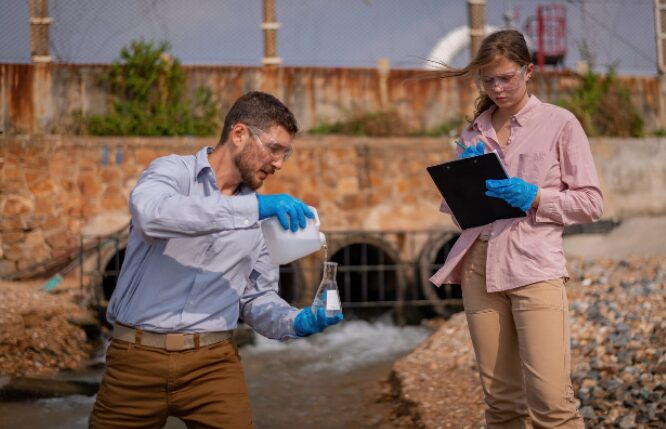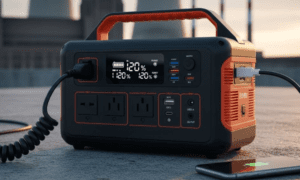Savannah, Georgia, with its picturesque coastline, rich marshlands, and historic significance, is also a region of unique geological and hydrological challenges. Its location along the Atlantic coast places it in an area where coastal soil types—primarily sandy loam and clay—interact with high water tables and tidal influences. These characteristics make groundwater management a critical concern for local authorities, builders, and environmental agencies. As urban development increases and climate conditions shift, understanding how to manage groundwater effectively becomes essential to sustaining infrastructure and preserving environmental integrity.
The Nature of Coastal Soils and Their Impact on Groundwater
Savannah’s coastal soil profile is a complex mixture of fine sands, silts, and clays, often underlain by a shallow water table. These soils are typically porous yet retain water, which can lead to slow drainage and waterlogging. The flat topography further exacerbates poor natural runoff, meaning rainwater and storm surges can significantly raise groundwater levels. Such conditions pose challenges for construction, agriculture, and flood prevention efforts.
The hydraulic conductivity in these soils varies by depth and location, affecting how quickly groundwater moves and how long it remains close to the surface. During heavy rainfall events, the limited permeability of clay-rich subsoils can trap water near the surface, leading to standing water and increased erosion.
Groundwater Rise and Climate Resilience
The implications of groundwater rise in Savannah are becoming more severe due to climate change. Rising sea levels and increased storm intensity contribute to saltwater intrusion and greater hydraulic pressure in underground aquifers. This encroachment of saltwater into freshwater aquifers reduces potable water supplies and harms plant ecosystems dependent on freshwater.
Moreover, higher groundwater levels increase the risk of subsurface flooding, even without visible surface water. Basements, utility lines, and building foundations become vulnerable to infiltration, causing structural damage and long-term maintenance issues.
Urban Development Pressures
Savannah’s growing population and economic expansion have led to extensive urban development in previously undeveloped or agricultural areas. These projects typically involve altering natural drainage patterns and adding impervious surfaces like roads and buildings, which inhibit water infiltration into the soil and increase surface runoff.
Poorly managed developments can result in localized flooding, overwhelmed stormwater systems, and long-term degradation of groundwater quality due to pollutants. Effective groundwater management must, therefore, be a key component of city planning, zoning regulations, and construction permitting.
Dewatering Techniques and Applications
To combat the challenges posed by high water tables and saturated soils, dewatering companies in Savannah and surrounding coastal regions play a crucial role. Dewatering involves removing groundwater or surface water from a construction site or soil excavation area to create a dry and stable working environment.
Common dewatering methods include
- Wellpoint Systems: Ideal for shallow excavations, they consist of a series of small-diameter wells connected to a vacuum pump that continuously extracts water.
- Deep Wells: Used for deeper excavations, deep wells rely on submersible pumps placed inside boreholes to remove water effectively.
- Sump Pumping: Water is collected in sumps (small pits) and then pumped out, often used in smaller projects or where other methods aren’t viable.
- Eductor Systems: These use a high-pressure water jet to draw groundwater to the surface, suitable for silty or clay-heavy soils.
By lowering the water table temporarily, dewatering facilitates safe excavation and reduces the risk of soil collapse or instability during construction. However, it’s critical that these systems are carefully designed to avoid adverse environmental impacts, such as soil subsidence or over-pumping aquifers.
Environmental Regulations and Compliance
Managing groundwater in a sensitive ecological zone like Savannah requires strict adherence to environmental regulations. Agencies such as the Georgia Environmental Protection Division (EPD) and the U.S. Environmental Protection Agency (EPA) set standards for water extraction, disposal, and treatment.
Permits are typically required for large-scale dewatering operations, especially near wetlands, rivers, or coastal marshes. Compliance includes monitoring discharge water quality to ensure it does not contain excessive sediment or contaminants that could harm aquatic life or degrade water quality in receiving bodies.
Mitigation measures, such as sediment basins, filter bags, and vegetative buffers, are often implemented alongside dewatering systems to protect the surrounding environment.
Sustainable Solutions and Long-Term Planning
While temporary solutions like dewatering are essential for specific projects, long-term groundwater management in Savannah requires sustainable practices. Some of the most effective strategies include:
- Permeable Pavements: These surfaces allow water to infiltrate the ground, reducing runoff and promoting groundwater recharge.
- Rain Gardens and Bioswales: These landscaping elements capture stormwater and enhance natural filtration processes.
- Green Roofs: By absorbing rainfall and reducing runoff, green roofs also improve building insulation and urban biodiversity.
- Subsurface Drainage Systems: Long-term drainage networks beneath urban developments can regulate water levels and prevent future saturation.
Cities like Savannah can benefit from integrating these techniques into their urban master plans, ensuring that new developments are both economically viable and ecologically responsible.
Conclusion
Groundwater management in Savannah’s coastal soils is a multifaceted challenge shaped by natural conditions and human activity. With rising sea levels, increasing development pressures, and fragile ecological systems, a comprehensive approach is vital. Dewatering companies are integral to managing immediate groundwater issues during construction, but sustainable planning and environmental stewardship must guide future efforts.
By combining innovative engineering solutions with strict regulatory oversight and ecological sensitivity, Savannah can maintain the delicate balance between progress and preservation. As the city continues to grow, investing in resilient infrastructure and adaptive water management strategies will be key to ensuring a secure and thriving coastal environment for generations to come.



































